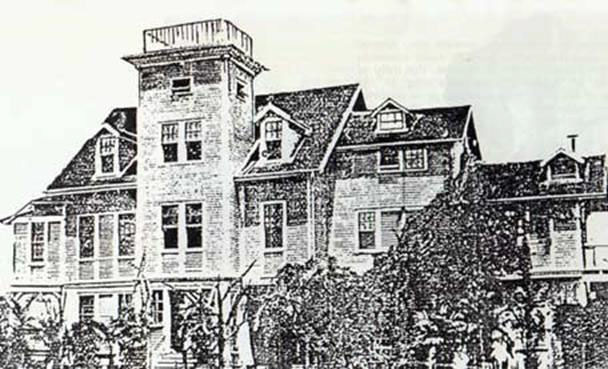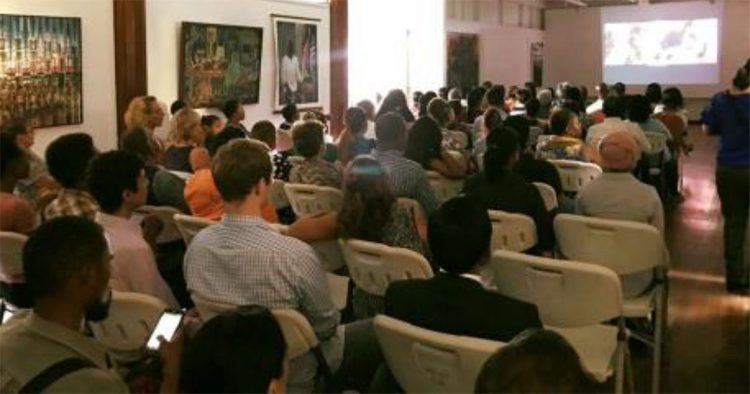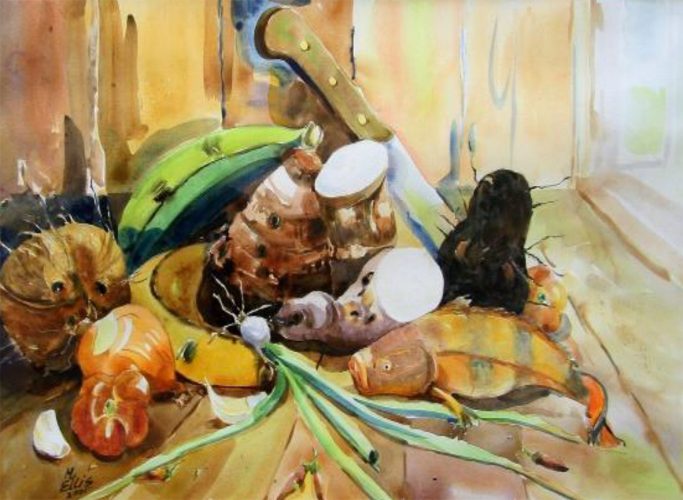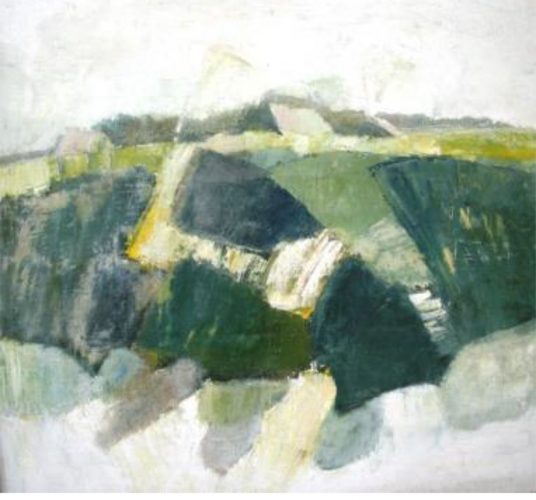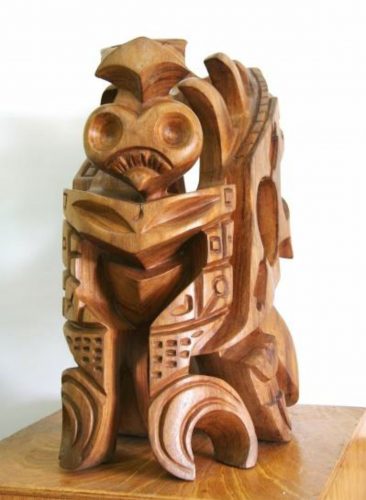Guyana’s National Gallery of Art, Castellani House, celebrates its 25th anniversary this year, having opened to the public on May 24, 1993. This is a welcome milestone for a national cultural institution. Castellani is Guyana’s main art gallery and the repository of the National Collection.
Castellani forms a key part of the cultural infrastructure of Guyana, and all efforts must be made to sustain and develop it and its sister institutions. It stands alongside the E R Burrowes School of Art, the University of Guyana Creative Arts programme, the Museum of African Art, the Guyana Visual Arts Competition and Exhibition and the Institute of Creative Arts as the bodies which carry the responsibility for ensuring the maintenance and growth of art in Guyana. In the wider cultural arena, it is a sister to other institutions such as the Walter Roth Museum of Anthropology and Archaeology, the National Archives, the Guyana Prize for Literature, the National Museum and Mashramani.
But there are at least two other important reasons why this milestone is worth celebrating. Firstly, Castellani House and its art treasure embody much more than a quarter of a century of history. Secondly, Castellani House, the National Collection, and the actuality of a national gallery of art in Guyana owe their existence to some remarkable decisions – the kind that help to define a nation – that were made over a period of about 140 years.
The building owes its existence to the grand proposal from the Royal Agricultural and Commercial Society in 1877 to establish a large public garden. The project was well received by government, which soon provided $72,000 to purchase land at the backlands of Pln Vlissingen. By 1879, one John Frederick Waby arrived to serve as head gardener, and he considerably advanced the work on the garden.
The plans for the garden also required the services of a superintendent of gardens and government botanist. This entailed proper accommodations for this official, so Cesar Castellani, a Maltese architect in the Public Works Department, was commissioned to design same. Work on the building began sometime after 1879. The first botanist was George Jenman, who was to become famous for his horticultural work in British Guiana. He arrived here in 1880 and was known to be living in the house in 1882. Castellani is famous for being the designer of many of Guyana’s most beautiful colonial buildings, including the Palms Geriatric Home and the old New Amsterdam Public Hospital building, which like many others, is no more.
The building underwent many alterations over the years but kept its basic structure. It was originally two-storey, but a third storey was added in 1942. Other changes were made in subsequent years to give the building its present shape.
The Residence
Many may recall that the building was the official home of Guyana’s prime minister Forbes Burnham, between 1965 and 1985. It was renamed ‘the Residence’ in 1966. After Mr Burnham died, however, the building was virtually abandoned until 1993, when the government, which had recently been elected, had the inspiration to repurpose it as the Nation’s Gallery.
Another act of great vision was the creation of a National Collection of Guyana, which includes artwork produced by the nation’s citizens. This collection had already been in existence long before 1993. The instigation for a National Collection came in 1950, when “Human World”, a painting by Guyanese Denis Williams, who had been residing and working in England, was featured on the cover of Time magazine. Recognition of the value of the work and the growing importance of Guyanese artists led to perceptive persons including Dr Frank Denbow and David Forde (according to Stanley Greaves) raising money locally to acquire the painting in 1956.
Of course, at this time there was no national gallery. However, as suggested by Evelyn Williams, the cultural arms of the government, such as the Council of the Arts (which existed in the late 1950s) and the History and Culture Council (early 60s) had been purchasing artwork done by Guyanese. When the National History and Arts Council (NHAC), which superseded these bodies, was formed in 1965, it inherited over 200 paintings and over 40 pieces of sculpture. This was the nucleus of the current National Collection.
By the 1960s, Guyana’s art had begun to display considerable maturity, richness and creative vision. From the early 1930s, pioneer artists such as Vivian Antrobus, had created the bridge between the art of the British School and the vision of the Guyanese people living in the colony. E R Burrowes and others popularised art in Georgetown and not only brought it to the people but helped to create the new generation of artists. The artists who emerged from these roots in the 1950s, such as Denis Williams, Stanley Greaves, Michael Leila, Donald Locke, Emerson Samuels and others were ready and eager to face the coming era of independence. They began to move Guyana’s art into the modern epoch. “Human World” summarised all of these developments and marked the triumph of Guyanese creativity in the bosom of the soon-to-be left-behind ‘motherland’.
Even though the NHAC had begun systematic collection of such important artwork, there was no suitable place to house and display them, much less to carry out all the associated work, like preservation, that a gallery needs to do. Many pieces were kept at the NHAC’s office in the National Park – the building that currently houses the E R Burrowes School of Art – or in government buildings, and many were sent to decorate Guyana’s embassies and consulates around the world. Williams reports that an effort towards a gallery was made in the mid-1970s, when architect Albert Rodrigues was commissioned to design a suitable building to house and display the collection and accommodate associated functions. Such plans were abandoned by the late 1970s due to economic difficulties the country was experiencing.
In the 1980s and early 1990s, there were many calls for the establishment of an art gallery. The National Exhibition of Visual Arts was still active, the E R Burrowes School of Art had just been founded and artists were holding exhibitions at various venues, including private galleries such as the Hadfield Foundation.
The absence of a dedicated national art space was one reason given for the creation of a gallery. However, another important reason was the inability of the public to see the National Collection, and for students, artists and the public to learn from the history of Guyanese art.
The inspiration to turn an unused building into the gallery was therefore timely, and it was a much-needed move. It is strongly believed that Janet Jagan, who was the wife of the then new president, Cheddi Jagan, and herself an art critic and patron, had a central role to play in this. On May 24, 1993 the former home of the colonial government botanists, ministers of agriculture, and prime minister/president was baptised Castellani House and made the home of the National Collection. Mr Everley Austin was appointed the first curator in 1994, and he was succeeded in 1996 by Ms Elfrieda Bissember. Mr Ohene Koama (deputy curator) is currently acting as curator.
Maintaining the National Collection
Even though this article has paid much attention to the history of the building and the National Collection, the nation’s art gallery is more than just a building and artwork. The mandate of the National Gallery makes clear the diverse and important work it has to do: to ensure “the preservation of the works of art constituting the national patrimony through the acquisition, documentation, exhibition, promotion and interpretation of such works.”
Moreover, the gallery is mandated to function “… as an exhibitor, interpreter and promoter of contemporary visual art of a professional standard, it provides lectures, seminars, workshops, and other forms of public education.”
The democratic and nation-building motivation of the gallery was emphasised in the statement that it was established as a “public, non-profit institution serving the interest of all the diverse communities which shape our national cultural character.”
Of course, the gallery has faced criticism in the past, especially in the area of conservation of the artwork. However, given the less-than-ideal conditions at the gallery, the fact that many of the older pieces had not been properly housed in the days before the gallery was established, and the lack of human resources, it has been able to do a good job of maintaining the National Collection.
While Castellani House is a fine example of our colonial architecture, it was not designed to be an art gallery or museum. The curators and staff have been working under the constraints of basic air-conditioning; exposure to salt air, tropical sunlight and climate conditions; lack of proper storage and workroom space and facilities. Sometimes poor materials and techniques used by artists and other factors make their jobs that much more difficult. The gallery needs updated workspace, materials and techniques and more specifically-trained personnel to battle these issues.
Against the criticism, the curators and other staff have quietly been doing important work in conserving, preserving, restoring, and cataloguing the collection. Indeed, this is what has kept the over 1,000 pieces in good condition over the years. Through the government, the gallery is currently finalising a much-welcomed collaboration with the Argentine Government through its embassy in Guyana, for experts from the National University of San Martín to restore artwork in the National Collection and to train restorers and conservationists.
Creating exhibitions and running a yearly programme of exhibitions are among the other functions of the gallery. These include exhibitions to coincide with important national dates, or with special occasions and displays of artists’ works. In recent times, the gallery has been centrally involved in the planning and administration of the Guyana Visual Arts Competition, and the accompanying exhibition. For each of the exhibitions it puts on, Castellani House produces a detailed catalogue. These catalogues now make up a very important treasure of primary documentation on Guyanese art. And of course, Castellani House is also responsible for ensuring the security of the artwork in the National Collection.
In addition, the gallery collaborates with Republic Bank to mount a national watercolour competition and a drawing competition in alternate years. It also mounts lectures, screens films, hosts film festivals, workshops and discussion panels, collaborates with other cultural bodies, and works with local artists.
Acquisitions
Within the last three years, Castellani has extensively reviewed its establishment, job descriptions, administrative structure, acquisitions policy, exhibitions policy, its rules of engagement with artists, and embarked on the formulation of an intellectual property rights policy. This suggests an organisation that is aware of its responsibilities. However, an active board is needed to help it move its plans along.
Acquisition of artwork is an important aspect of the gallery’s work, to ensure that the nation’s creativity is preserved and well-represented.
Currently, the National Collection stands at over 1,200 pieces of artwork covering Guyana’s pre and post-independence history. Most of these are paintings, but sculpture is well-represented. It includes all of the major names in Guyanese art, from the pioneers to the succeeding generations right down to contemporary artists. Also included are less-well-known Guyanese artists, thus making the collection a complete picture of the development of our art.
This body of work covers a variety of themes reflecting life in Guyana: everyday life, traditions, aspirations, struggles, occupations, lifestyles, festivals, celebrations, spirituality, the landscape, history, people, resistance, ethnicity, social commentary, and much more. Given our multiethnic society, many pieces in the collection reflect our desire for cohesion. The collection is a rich repository of ideas and information about Guyana. This, apart from the raw creativity, makes it an important national resource.
The various styles and approaches taken by our artists as they tried to articulate a truly Guyanese vision are evident in the collection, from the early British School landscape influence seen in Antrobus, to the experimentations of Burrowes, to the modernistic leanings of Locke, Greaves and others. The innovations of Dudley Charles, Gary Thomas and Omowale Lumumba, the atavism of Philip Moore and Betsy Karim, the politics of Bernadette Persaud, the precision of Winslow Craig and so much more shows that Guyanese have a vast, complex and vital imagination.
The National Gallery is a physical place and resource that has a long and rich history. But it is also a space for imagination, reflection, ideas and engagement. The existence of the gallery encourages dialogue, which is critical to cohesion and national development. When an exhibition is mounted at Castellani House, or an event is held there, it causes a congregation of people of all walks of life to engage in a common enjoyment, suspend their mundane cares for a while, and be refreshed by the artwork or discussion.
Through its very existence, Castellani House symbolizes the value we place on ideas and vision. On the one hand, it pays tribute to the many men and women who in the past carved out a space of the imagination that we can call Guyana, while on the other hand, it is a springboard for the artists of today and the future to further develop this space. It is therefore important that Castellani House is supported and developed.
Twenty-five years is, paradoxically, a long space of time and too brief a period, depending on the work that has to be done. That we have created and sustained a National Gallery of Art is a credit to us. That Castellani House has managed to exist and sustain a credible programme of work for a quarter of a century is no small achievement. But there is more to be done. An argument can be made that we have not made full use of our National Collection and gallery. While Castellani House itself has some responsibility to bear for this, our entire education system has to recognise the value of art and the role it plays in a society. The current emphasis on STEM (Science, Technology, Engineering and Mathematics) and the looming transformation of our economy tend to push the Humanities into the background. However, this is the time when we most need to focus on who we are, and what values we hold. Castellani is a vast reservoir of Guyanese intellectual value, it possesses an irreplaceable component of our national patrimony, and it represents a vital space for self-understanding. With all of this, our National Gallery of Art is critical to our continued existence as a nation.
